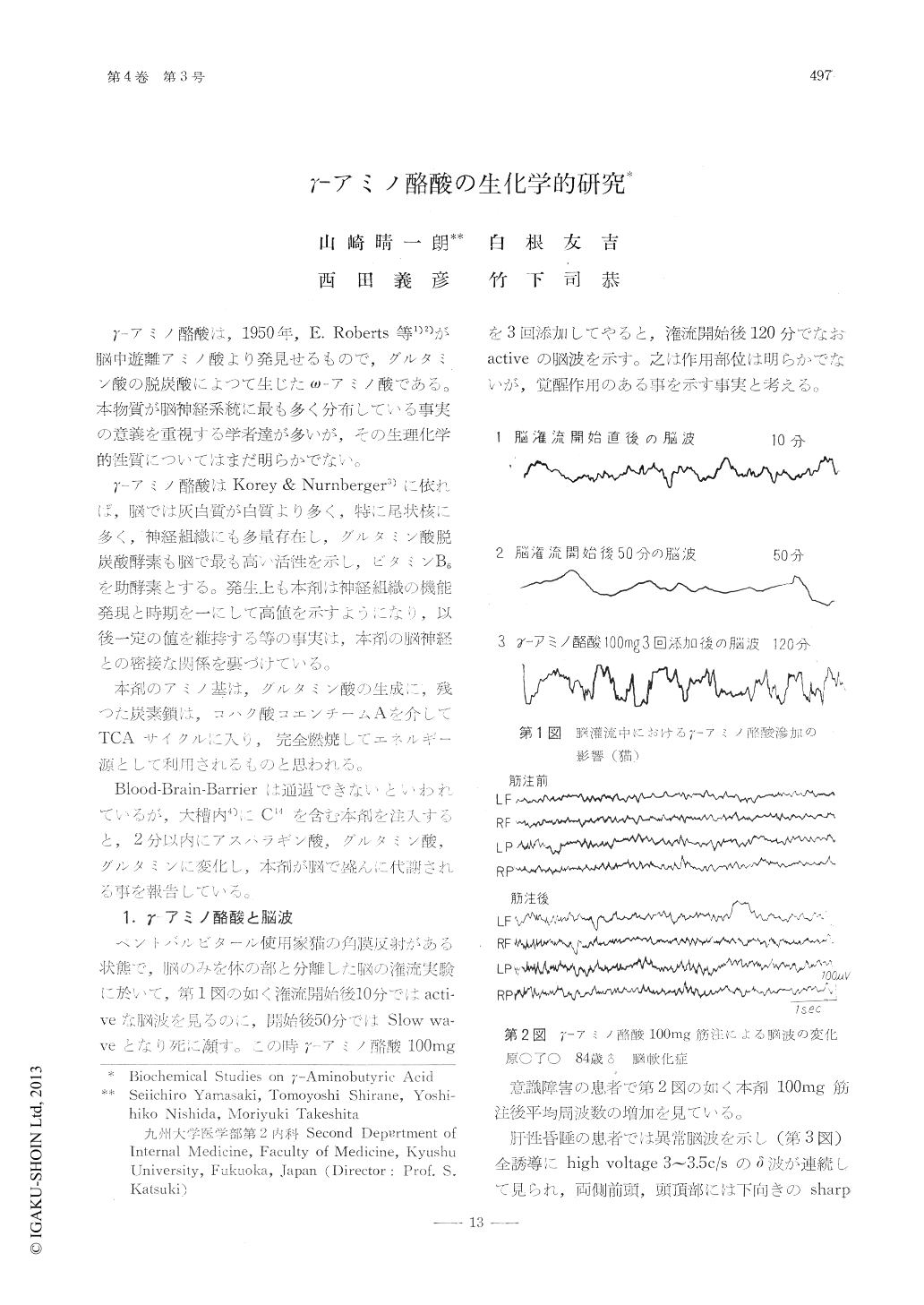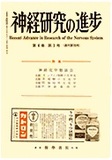Japanese
English
- 有料閲覧
- Abstract 文献概要
- 1ページ目 Look Inside
γ-アミノ酪酸は,1950年,E. Roberts等1)2)が脳中遊離アミノ酸より発見せるもので,グルタミン酸の脱炭酸によつて生じたω-アミノ酸である。本物質が脳神経系統に最も多く分布している事実の意義を重視する学者達が多いが,その生理化学的性質についてはまだ明らかでない。
γ-アミノ酪酸はKorey & Numberger3)に依れば,脳では灰白質が白質より多く,特に尾状核に多く,神経組織にも多量存在し,グルタミン酸脱炭酸酵素も脳で最も高い活性を示し,ビタミンB6を助酵素とする。発生上も本剤は神経組識の機能発現と時期を一にして高値を示すようになり,以後一定の値を維持する等事実は,本剤の脳神経との密接な関係を裏づけている。
When γ-Aminobutyric acid was given to comatose patients (electro encephalographically), itProduced some excited fast wave in human subjects, and activated wave in cats during brainblood perfusion.
The chemical changes of the cat's brain cortexwere about the same as those seen in cases byelectric stimulation.
The increase of total nitrogen and the decreaseof amino acid nitrogen in acid soluble fractionof the brain cortex, and the decrease of totalnitrogen, the increase of amino acid nitrogen inlipid and nucleic acid fractions by Schneider'smethod, were studied.
In respect to the clinical effects of γ-Aminobutylic acid, its administration brought about therecovery from hepatic coma.
However in rabbits with hyper ammonemia, injection of γ-Aminobutyric acid resulted in fatherelevation of blood ammonia. This is suggestiveof the γ-Aminobutyric acid having no effect indecreasing blood ammonia level.
Therefore, in the etiology of hepatic coma, other than increase of blood ammonia level mayalso play a role.

Copyright © 1960, Igaku-Shoin Ltd. All rights reserved.


